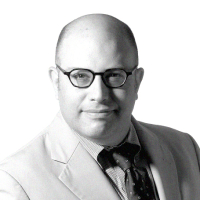Western intelligence agencies have had great success in the past sleuthing out Iran’s undeclared nuclear facilities. But the Iranians have gotten better at hiding their tracks, according to some current and retired United States intelligence officers who say it could prove very difficult for the world to catch Iran again if it tries to build a nuclear weapon in secret.

Since 2009, when the second uranium enrichment facility was revealed in Qom, Iran has taken several steps to better conceal a weapons program, these people say. It has beefed up security of its cyber networks, for example, after the Stuxnet computer worm infected computers in Iran’s largest uranium enrichment site. Its Revolutionary Guard has also established a cyber warfare command. The division’s commander died mysteriously earlier this month.
Iran has also improved security procedures for protecting personnel in its nuclear program, following a string of attacks on its scientists, allegedly by Israel. Finally, as Iran’s declared uranium enrichment facilities in Natanz and Qom have expanded, so has the country’s infrastructure for building centrifuges, the machines that enrich that uranium. The current and former U.S. intelligence officials say this means it’s easier for Iran to siphon off material for secret facilities with more nefarious purposes, if it chose to do so.
“There have been successes in finding secret Iranian sites but we know they are getting better at this,” said David Albright, a former U.N. weapons inspector and president of the Institute for Science and International Security, a nonprofit think tank. “They are better at keeping better secrets, better at compartmentalization of their program and they are better at cyber security.”
Iran’s leaders have publicly said they don’t intend to build a nuclear weapon. The U.S. intelligence community’s official estimate since 2007 is that Iran stopped work on developing a warhead, while continuing to work on the much more challenging process of enriching weapons grade fuel.
But the latest U.S. estimate, according to current and former U.S. intelligence officials, is that Iran has mastered the process for making the highly enriched uranium needed to build a nuclear weapon.
One recently retired senior U.S. intelligence official said he believed Iran was trying to build a weapon, but stressed that it’s a slow process. This official also said it would be easy to hide a secret enrichment facility in a warehouse in downtown Tehran. To start, it is difficult to detect uranium enrichment through measuring the changes in atmosphere around a physical plant. The lack of these kinds “signatures” means that the U.S. has to rely more on human assets as opposed to sophisticated satellites and other kinds of technical intelligence gathering to know if enrichment was taking place in a specific location.
The concern about hidden facilities is not hypothetical. Iran’s nuclear negotiators in the past have said there are plans to build new enrichment plants. In 2010 Iran’s chief nuclear negotiator, Ali Akbar Salehi, said there were plans to build ten more such plants. Iranian officials in 2011 said those plans were delayed for two years.
Iran’s gains in security are not the only reason why detecting a secret facility could be difficult for western spies. Between 2003 and 2005, Iran shared information with the International Atomic Energy Agency (IAEA) on its production of centrifuges, but it stopped sharing this data in 2005 after it withdrew from an interim agreement with the west on its nuclear programs and began expanding its program.
The data on centrifuge production was vital to intelligence agencies. Olli Heinonen, a former senior IAEA executive who worked on Iran’s program, said, “You can establish how many centrifuges they can manufacture out of this material. When you know the amount, you can fairly easily determine an upper limit of how many centrifuges have been made and determine whether they have declared everything to you.”
In 2009, when the U.S. discovered the secret underground enrichment facility known as Fordow in Qom, the centrifuge production information was only four years out of date. Today that information is eight years old.
“It’s much more likely that Iran would try to build nuclear weapons in a secret enrichment plant than one of the safeguarded plants,” said Gary Samore, who was the White House Coordinator for Arms Control and Weapons of Mass Destruction during President Obama’s first term. “If they tried to use one of their safeguarded plants it would be detected in a matter of weeks. It’s much safer for them to do it secretly. Once they have built a couple of nuclear weapons they would be in a position to test one to show the world and there is not much we can do about it.”
Samore said he still has faith in America’s ability to detect secret Iranian activities. But he also said it was no guarantee. “We detected both Natanz and Qom before they were completed. Whatever magic we are using, it’s still available to us. It’s not 100 percent guaranteed, of course not,” he said.






